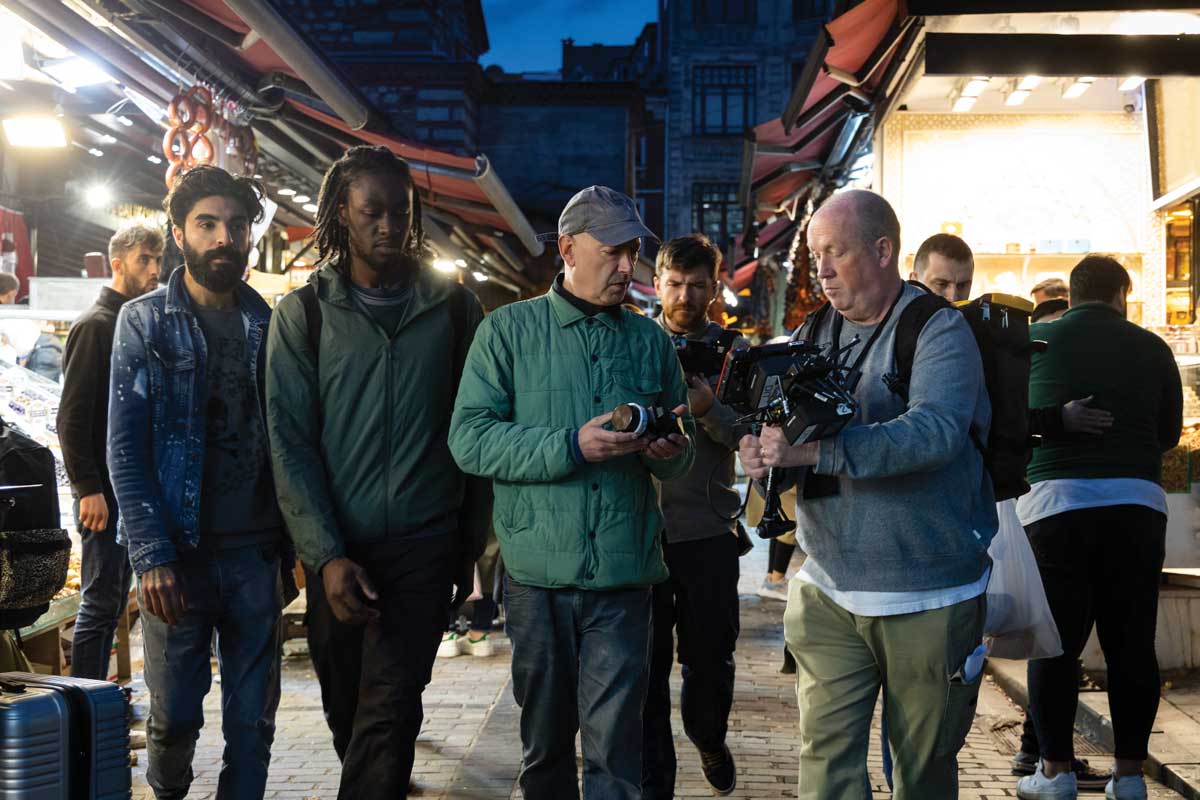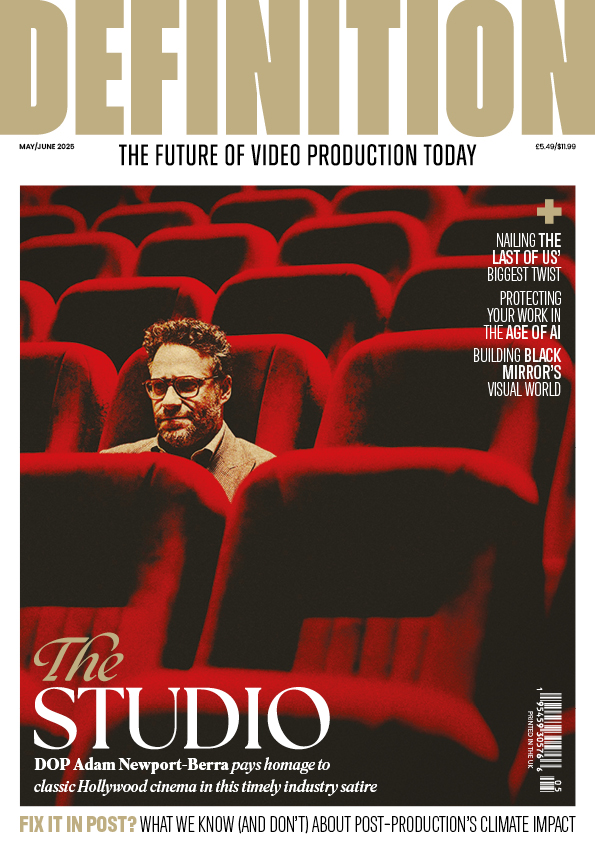
Slow Horses
Posted on Sep 30, 2024 by Samara Husbands
Cinematographer Danny Cohen talks us through the latest season of slick spy thriller Slow Horses
Words Will Lawrence
Gary Oldman puts it very succinctly: “Sean Connery never said, ‘Hang on a second, I need to have a whiz!’” The Oscar-winning actor is the leading man on Apple TV+’s darkly comic spy series Slow Horses, playing the brilliant, if somewhat irascible Jackson Lamb. He’s the leader of a troop of MI5 agents dumped in Slough House – the home of those who have made career-crippling mistakes. These are professional spies, but they are not James Bond. They are not Jason Bourne.
“Slow Horses is about real people we can relate to,” adds Oldman. “You’re always looking for material that can be light and dark and have a frequency and consistency. I think we’ve found the perfect balance of humour and drama. It’s real and yet, by degree, it’s slightly heightened. It’s got edge. People try it and it doesn’t always work.”
It works on Slow Horses. The filmmakers have shot five seasons – number four airs in September – and it has maintained consistently high standards. The excellent cast (also including Kristin Scott Thomas, Jack Lowden and Saskia Reeves), novelist Mick Herron’s strong source material and screenwriter Will Smith’s canny adaptation all contribute to this success. So does the strategy of constantly hiring the same accomplished filmmakers. Cinematographer Danny Cohen, for example, has shot every episode on Seasons 1, 2, 4 and 5.
“To keep coming back, I’ve never done anything like this before,” begins Cohen, a regular collaborator with renowned British TV and film directors including Stephen Poliakoff, Stephen Frears, Tom Hooper and Shane Meadows.
“Essentially, everybody comes back on Slow Horses, which is crazy, and you don’t want to disappoint. That means you’re constantly pushing things, and what’s great about the production is that they’re all on board with that. They’re not skimping. You definitely get the sense on some series or streamers that the wind gets pulled out of their sail and they can lose energy the longer they go on.”
With six episodes per season, Cohen has now filmed 24 over a three-year period, “which is totally ridiculous,” he says. “It’s a bit like shooting 20 or so feature films in that time frame.” And it’s been consistently rewarding. He has shot a series that is full of characterful moments and biting humour and yet which, as Oldman notes, subverts many of the expectations associated with stories about spies and secret agents.
“We have had fun with that, with slightly defying expectations,” Cohen says. “People think spies are all Bond and fast cars. What I’ve really enjoyed is how it’s not any of that.”
What it is, he says, is all about creating a unique atmosphere. “With the interiors of Slough House and all the locations that we’re finding, we’re going for distinctly unsexy environments. It’s not sexy backlight with smoke. It’s whatever the opposite is. We want the walls to be dripping with grease.”
In Season 3, there’s a moment where Lamb wakes up and takes a wash in his toilet sink, pressing into service a piece of soap that’s wafer thin. “You could almost smell the reality,” smiles Cohen. “That’s not something Daniel Craig would do.
“The show has got a very stylised look in the sense that we’re always thinking about how things play off against each other,” he adds. “But the fun is to make it feel very, very unstylised. I love the Bourne films, but Slow Horses isn’t that. It’s kind of the anti-Bourne.”
While the spies in Slow Horses do not operate on a Bond or Bourne level, they are still called to action. Season 3 had a somewhat Bondian chase through Istanbul, while the new season has a big set piece unfolding around London’s King Cross station.
“Our characters are the worst spies. They’re rubbish at their jobs; the reason they’re in Slough House is because they’re all misfits and useless,” Cohen explains. “But, then again, you can’t help yourself sometimes because when you have a chase, you have a chase – and that gives you an excuse to go down the Bourne or Bond road. Jumping around, stylistically, is a lot of fun.”
Cohen is a fan of many films in the genre, including the Bourne movies, and name-checks both The Spy Who Came in from the Cold, the 1965 John le Carré adaptation with Richard Burton, and 1984’s Defence of the Realm, starring Gabriel Byrne, Greta Scacchi and an excellent Denholm Elliott. Among their many attributes, both films feel very authentic. As does Slow Horses.
“What I really loved about Defence of the Realm is how it combined London with that type of story,” Cohen says. “It did it brilliantly.” Slow Horses does too, eschewing the city’s obvious sites and sounds and focusing on lesser-known spots. Cohen’s use of office buildings, for example, echoes the work of acclaimed photographer Andreas Gursky.
“London is a very photogenic city,” says Cohen, “and it would be easy to lapse into ticking off the landmarks. The show is on Apple, it’s got an international audience, but London’s got a lot more to offer than that. So with the location manager, I’m always trying to find bits of London that are under-photographed.”
Again, it’s about subverting expectation, something that becomes apparent in Season 4 when the show moves to France. “You could easily fall into lazy stereotypes of what a French rural town would feel like, with a cafe, boulangerie and nice square. Rather than go down that road, we wanted everything to be a bit shitty. The streets are empty, everybody’s unfriendly.” He laughs, “I’m sure the French tourist board hates us. But that’s what’s amazing – we are pretty much given free rein.”
The same is true of the palette. Slow Horses is a beautifully coloured series. “It’s all about the atmosphere and the texture. You want things to be really tactile, so it isn’t smooth finishes. It’s all rough edges.”
Shooting the series, he says, is a bit like putting together a 3D jigsaw puzzle, “because inevitably you revisit locations. So that’s something you have to bear in mind. You revisit sets and it takes five or six months to shoot a series that in essence only happens in 72 hours. So you’re stretching screen time in a weird way. And you’re stretching the seasons.
“When you’re filming for five or six months, it is potentially two seasons. So you’re going from spring to summer or autumn to winter or winter to spring. Just from a practical point of view, you have to think about how long a day is in relationship to how long the nights are.”
Season 4 features quite a lot of night shoots, which prompted a switch in camera choice. While the earlier seasons were shot with the ARRI ALEXA Mini LF, for Season 4, Cohen switched to the ALEXA 35. “It’s a lot faster and, partly because we had a lot of night shoots to do, I felt that was quite a good choice, and it did work out well.
“I really enjoyed this season. The show has become a bit of a monster but I have a lot of fun doing it.”
This feature was first published in the October 2024 issue of Definition.


















